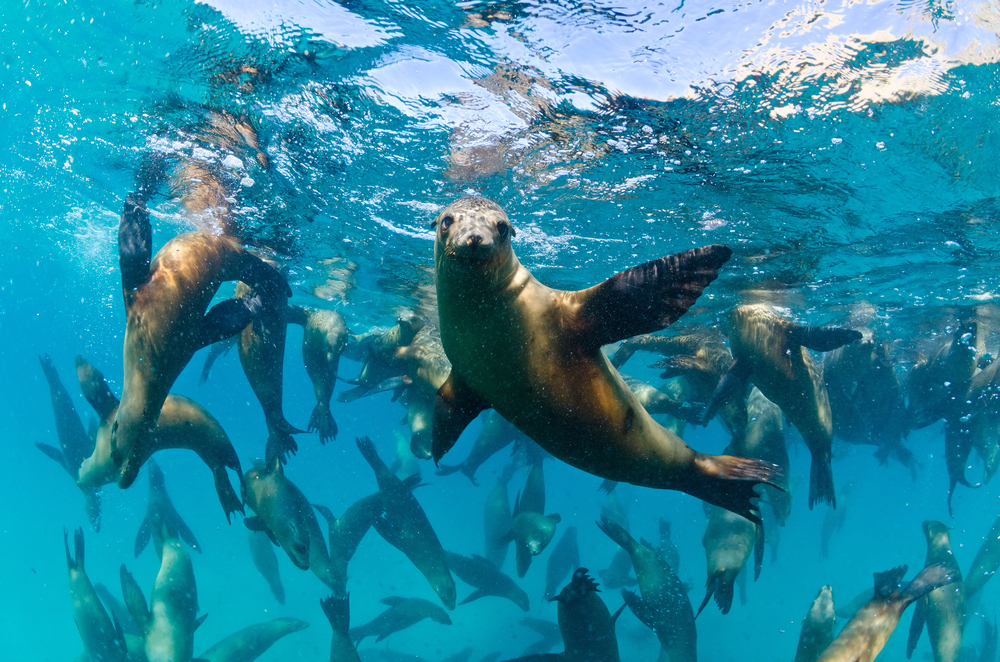
In the wake of President Obama’s recent creation of the largest protected marine area on the planet off Hawaii, an international coalition of governments and NGOs attending the World Conservation Congress have this week committed to officially safeguarding a third of all the world’s oceans by 2030.
Currently, less than four per cent of Earth’s oceanscape is protected (compared to around 15% of the globe’s landmass) and a plan to expand that by 2020 (originally laid out by the United Nations Convention on Biological Diversity in 2010) only talked about increasing the protected area to 10%. However, a study published in Conservation Letters in March this year, saw a collective of scientists stating that at least 30 per cent of the oceans need to be set aside in order to protect biodiversity and maximise fisheries yield.
‘If we are to make genuine inroads into safeguarding the oceans, we need to protect upwards of 30 percent of the sea,’ argues Roberts, a marine biologist from York University who led the team behind the study. ‘It is hard to believe we ever thought nature could manage on less.’
The vote to endorse this extent of marine conservation was passed by a majority of the 190 nations attending the IUCN World Conservation Congress, which has just concluded in Honolulu, who have now collectively committed to protecting almost a third of all the saltwater in the world within the next 14 years.
Japan, whose representative attempted to block the motion, was one of the few voices of dissent, but the move had broad international support. ‘We are protecting our ocean so that our children can benefit the same as countless of generations before them,’ said the president of Palau, Tommy Remengesau Jr. ‘The ocean is the foundation of our livelihoods and our culture. The global community must do more, and do it urgently, as we face ever-growing threats to our oceans—overfishing, pollution, and climate.’
The vote capped off a hugely positive week for the watery parts of the globe, with the presidents of Ecuador, Colombia and Costa Rica also announcing the creation of larger marine reserves around their coastal borders at a historic meeting in the Galapagos. The countries have expanded three UNESCO World Heritage Sites—Cocos, Malpelo and the Galapagos—so that around 83,600 square miles of protected ocean now exist off their shores.
And the conservation group Mission Blue, working in collaboration with the International Union for Conservation of Nature, also announced the designation of 14 new ‘Hope Spots‘, marine areas they say are critical to ocean health and thus deserve special protection, including Hatteras in North Carolina and Malpelo off the coast of Columbia.
Influential American marine biologist and explorer Sylvia Earle introduced the idea of Hope Spots in her 2009 TED talk, and since then the concept has generated the support of organisations, individuals, companies and corporations, including National Geographic and Rolex, with technology partners such as Google jumping on board to help people remotely explore and better understand the ocean’s extraordinary ecosystems.
At the moment there are 76 Hope Spots around the world, including Moreton Bay Marine Park in Australia, the glass sponge reefs of Hecate Strait and Queen Charlotte Sound in Canada and the Jardines de la Reina in Cuba.
[geoip-content not_country=”CA”]
ON THE APP
 Love and Death in One Night
Love and Death in One Night
Once every year off the coast of Monterey, California while the moon is full, thousands of red squid gather to spawn. While in their loving embrace, they must endure the ever-present threat of sharks and other predators looking for an easy meal.
Want to watch Love and Death in One Night for free right now? Subscribe to the Love Nature streaming app and start your 30-day free trial of the best on-demand natural history documentaries out there. [/geoip-content]

